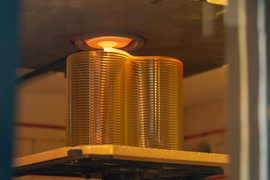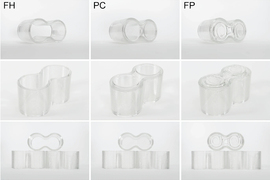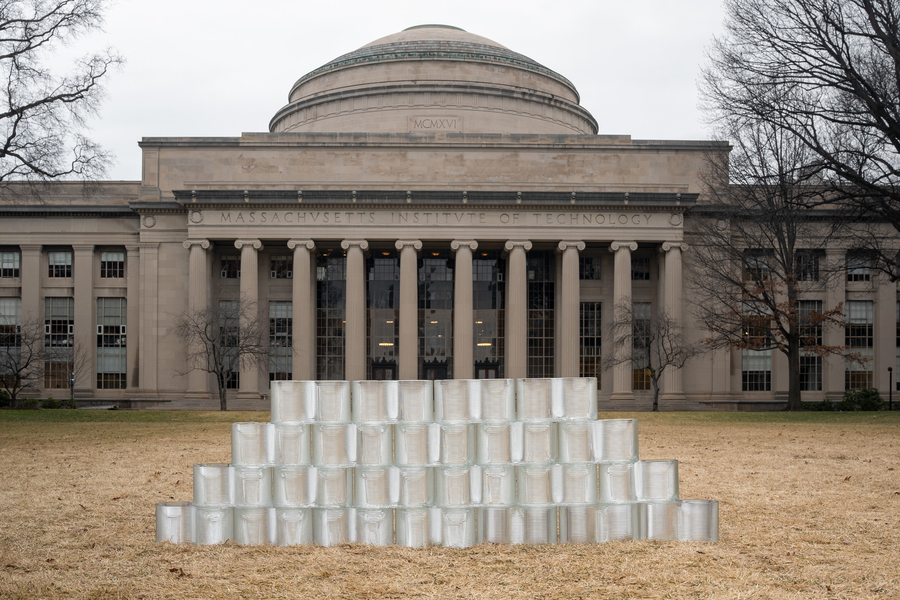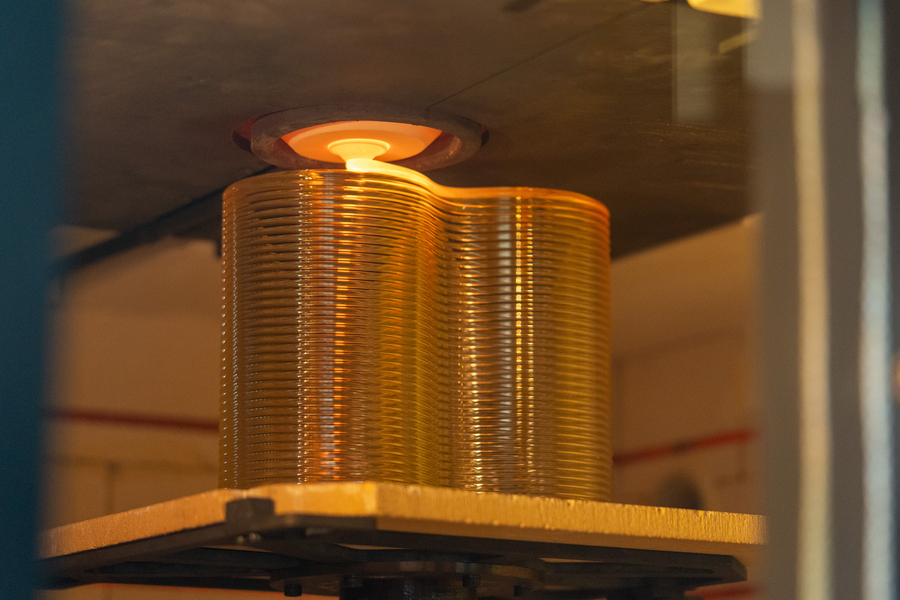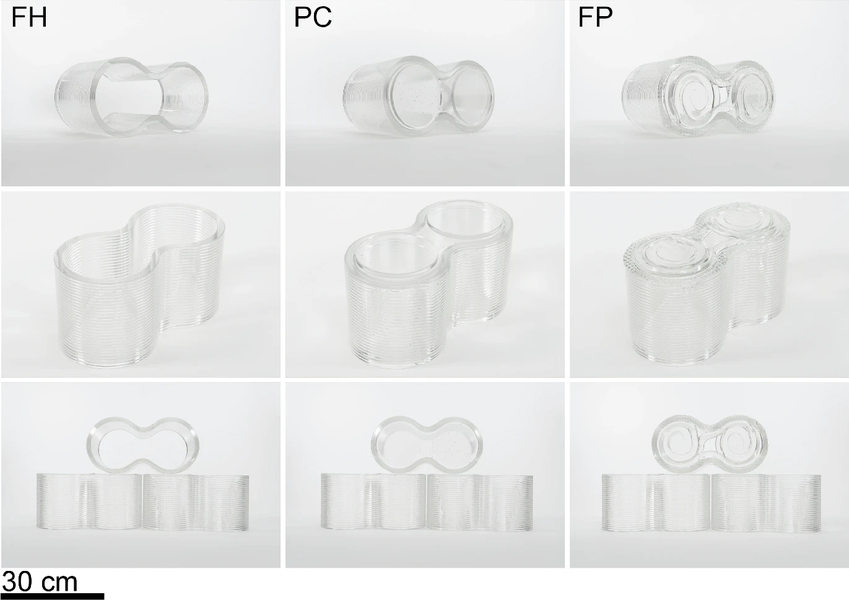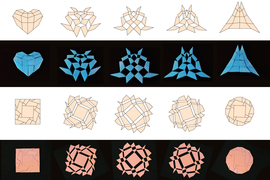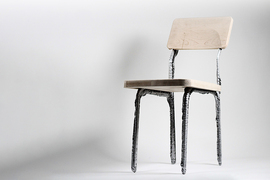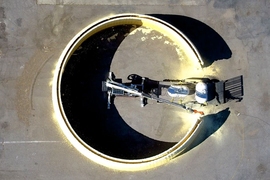What if construction materials could be put together and taken apart as easily as Lego bricks? Such reconfigurable masonry would be disassembled at the end of a building’s lifetime and reassembled into a new structure, in a sustainable cycle that could supply generations of buildings using the same physical building blocks.
That’s the idea behind circular construction, which aims to reuse and repurpose a building’s materials whenever possible, to minimize the manufacturing of new materials and reduce the construction industry’s “embodied carbon,” which refers to the greenhouse gas emissions associated with every process throughout a building’s construction, from manufacturing to demolition.
Now MIT engineers, motivated by circular construction’s eco potential, are developing a new kind of reconfigurable masonry made from 3D-printed, recycled glass. Using a custom 3D glass printing technology provided by MIT spinoff Evenline, the team has made strong, multilayered glass bricks, each in the shape of a figure eight, that are designed to interlock, much like Lego bricks.
In mechanical testing, a single glass brick withstood pressures similar to that of a concrete block. As a structural demonstration, the researchers constructed a wall of interlocking glass bricks. They envision that 3D-printable glass masonry could be reused many times over as recyclable bricks for building facades and internal walls.
“Glass is a highly recyclable material,” says Kaitlyn Becker, assistant professor of mechanical engineering at MIT. “We’re taking glass and turning it into masonry that, at the end of a structure’s life, can be disassembled and reassembled into a new structure, or can be stuck back into the printer and turned into a completely different shape. All this builds into our idea of a sustainable, circular building material.”
“Glass as a structural material kind of breaks people’s brains a little bit,” says Michael Stern, a former MIT graduate student and researcher in both MIT’s Media Lab and Lincoln Laboratory, who is also founder and director of Evenline. “We’re showing this is an opportunity to push the limits of what’s been done in architecture.”
Becker and Stern, with their colleagues, detail their glass brick design in a study appearing today in the journal Glass Structures and Engineering. Their MIT co-authors include lead author Daniel Massimino and Charlotte Folinus, along with Ethan Townsend at Evenline.
Lock step
The inspiration for the new circular masonry design arose partly in MIT’s Glass Lab, where Becker and Stern, then undergraduate students, first learned the art and science of blowing glass.
“I found the material fascinating,” says Stern, who later designed a 3D printer capable of printing molten recycled glass — a project he took on while studying in the mechanical engineering department. “I started thinking of how glass printing can find its place and do interesting things, construction being one possible route.”
Meanwhile, Becker, who accepted a faculty position at MIT, began exploring the intersection of manufacturing and design, and ways to develop new processes that enable innovative designs.
“I get excited about expanding design and manufacturing spaces for challenging materials with interesting characteristics, like glass and its optical properties and recyclability,” Becker says. “As long as it’s not contaminated, you can recycle glass almost infinitely.”
She and Stern teamed up to see whether and how 3D-printable glass could be made into a structural masonry unit as sturdy and stackable as traditional bricks. For their new study, the team used the Glass 3D Printer 3 (G3DP3), the latest version of Evenline’s glass printer, which pairs with a furnace to melt crushed glass bottles into a molten, printable form that the printer then deposits in layered patterns.
The team printed prototype glass bricks using soda-lime glass that is typically used in a glassblowing studio. They incorporated two round pegs onto each printed brick, similar to the studs on a Lego brick. Like the toy blocks, the pegs enable bricks to interlock and assemble into larger structures. Another material placed between the bricks prevent scratches or cracks between glass surfaces but can be removed if a brick structure were to be dismantled and recycled, also allowing bricks to be remelted in the printer and formed into new shapes. The team decided to make the blocks into a figure-eight shape.
“With the figure-eight shape, we can constrain the bricks while also assembling them into walls that have some curvature,” Massimino says.
Stepping stones
The team printed glass bricks and tested their mechanical strength in an industrial hydraulic press that squeezed the bricks until they began to fracture. The researchers found that the strongest bricks were able to hold up to pressures that are comparable to what concrete blocks can withstand. Those strongest bricks were made mostly from printed glass, with a separately manufactured interlocking feature that attached to the bottom of the brick. These results suggest that most of a masonry brick could be made from printed glass, with an interlocking feature that could be printed, cast, or separately manufactured from a different material.
“Glass is a complicated material to work with,” Becker says. “The interlocking elements, made from a different material, showed the most promise at this stage.”
The group is looking into whether more of a brick’s interlocking feature could be made from printed glass, but doesn’t see this as a dealbreaker in moving forward to scale up the design. To demonstrate glass masonry’s potential, they constructed a curved wall of interlocking glass bricks. Next, they aim to build progressively bigger, self-supporting glass structures.
“We have more understanding of what the material’s limits are, and how to scale,” Stern says. “We’re thinking of stepping stones to buildings, and want to start with something like a pavilion — a temporary structure that humans can interact with, and that you could then reconfigure into a second design. And you could imagine that these blocks could go through a lot of lives.”
This research was supported, in part, by the Bose Research Grant Program and MIT’s Research Support Committee.

